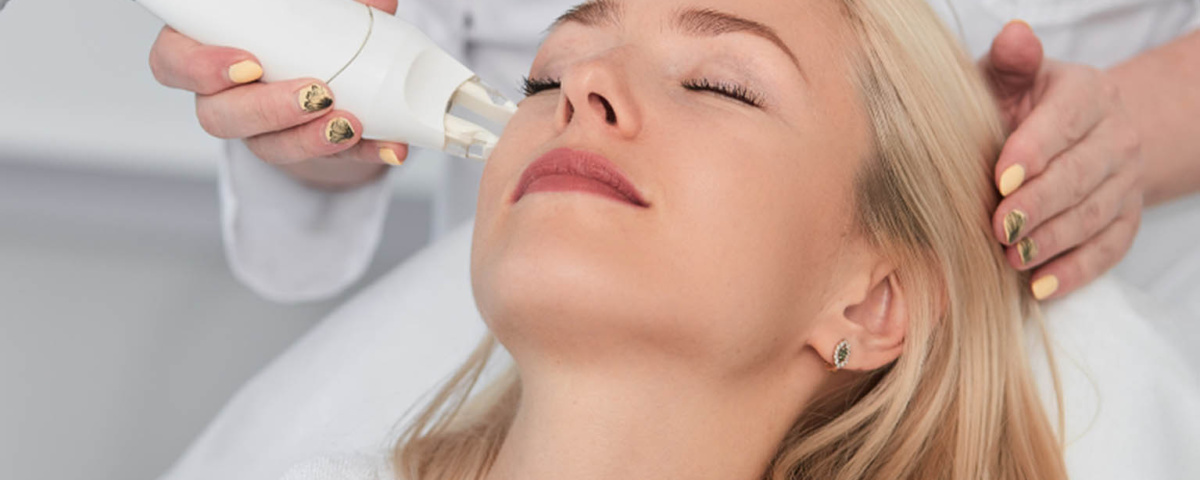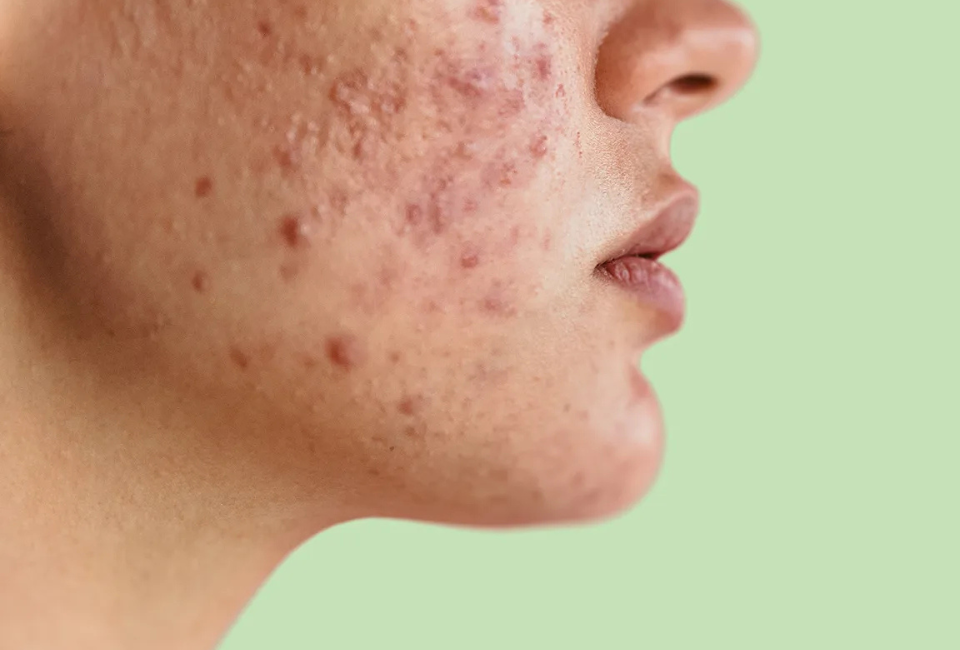- Make An Appointment
- +91-9460006594
- +91-9571548977
- info@jodhpurskintreatment.com
Laser Treatment: Skin Rejuvenation & Resurfacing Guide

Uneven Hairline in Men: Genetic Trait or Hair Loss Sign?
January 30, 2025Table Of Content
Laser treatment for skin rejuvenation and resurfacing has transformed modern skincare, offering innovative and effective solutions for a wide range of concerns. Whether you’re aiming for smoother, younger-looking skin or addressing specific issues like fine lines, wrinkles, acne scars, or pigmentation, laser therapy provides a non-invasive and highly targeted approach. By using focused light energy, these treatments penetrate the skin to stimulate collagen production, repair damaged skin layers, and enhance overall texture and tone.
One of the most significant advantages of laser treatments is their versatility. Different types of lasers, such as fractional, ablative, and non-ablative, are designed to treat various skin conditions with precision. Ablative lasers remove the outer layer of the skin for deeper resurfacing, while non-ablative lasers target deeper layers without disrupting the surface, resulting in minimal downtime. Advanced technologies also allow for customization based on skin type, ensuring safe and effective results for a diverse range of patients.
Additionally, laser treatments are minimally invasive, making them an attractive alternative to traditional surgical procedures. With shorter recovery periods and fewer risks, they provide an efficient way to achieve long-lasting improvements in skin health and appearance. In this article, we will dive deeper into how laser treatments work, the different types available, and the numerous benefits they offer for achieving radiant, rejuvenated skin.
What is Laser Treatment for Skin Rejuvenation?
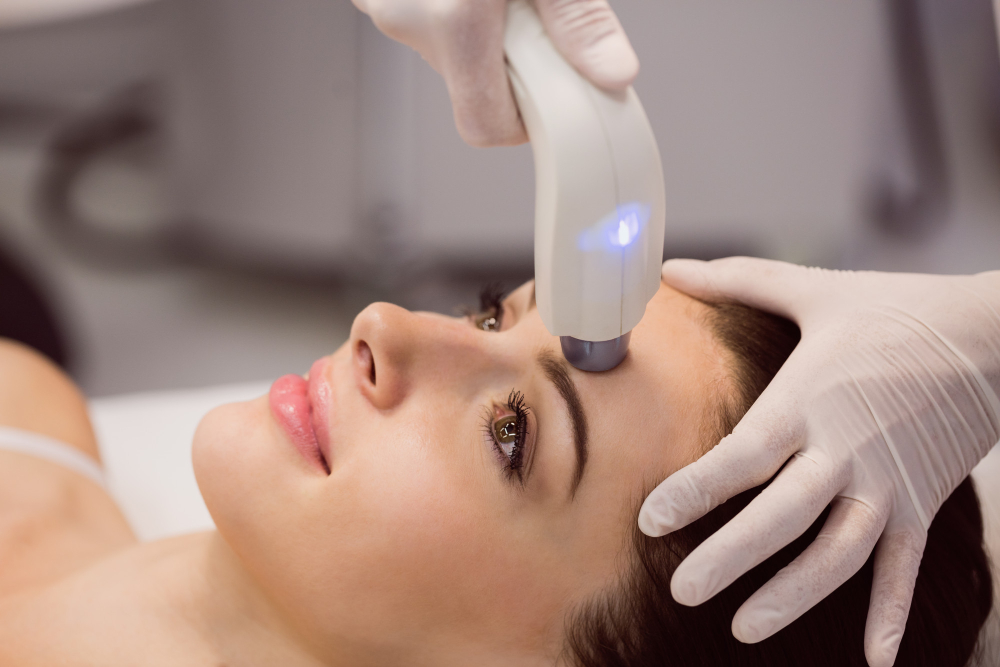
Laser treatments work by delivering concentrated beams of light to the skin, which penetrate its layers to stimulate collagen production, remove damaged skin cells, or target pigmentation and blood vessels. Depending on the type of laser used—ablative or non-ablative—the treatment can either remove the outer layer of the skin for deeper resurfacing or target deeper layers without harming the surface. Popular laser treatments include fractional CO2 lasers, IPL (intense pulsed light), and Nd:YAG lasers, each tailored to address specific concerns such as sun damage, enlarged pores, or uneven skin tone. With advancements in technology, laser treatments have become increasingly precise, offering customizable solutions for various skin types and minimizing recovery time.
How Does Laser Skin Resurfacing Work?

Laser skin resurfacing works by using focused light to remove damaged outer layers of skin, promoting the growth of new, healthier skin. The procedure stimulates collagen production, which leads to smoother, firmer skin. There are two main types of laser resurfacing treatments: ablative and non-ablative. Ablative lasers remove a thin layer of skin, while non-ablative lasers work by stimulating the deeper layers of skin without damaging the surface.
Types of Laser Resurfacing Treatment
- Ablative Lasers: These are more intense and remove layers of skin to reveal new skin underneath. The most common ablative lasers are CO2 and erbium lasers.
- Non-Ablative Lasers: These lasers are gentler and work by stimulating collagen production without damaging the skin’s surface. Fractional CO2 and Nd:YAG lasers are examples of non-ablative options.
Benefits of Laser Therapy for Face
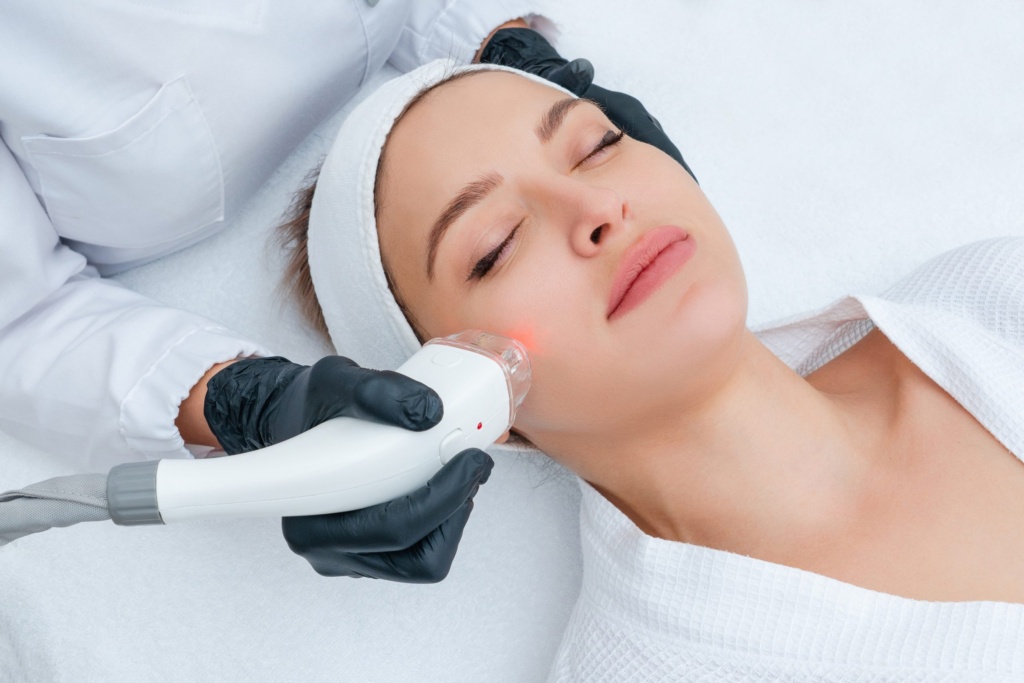
Close up of beautician hand making ultrasound facial procedure by special equipment. Her closed eyes with slight smile
Laser therapy for the face offers numerous benefits. This treatment helps in skin rejuvenation, making it a popular choice for individuals who wish to combat signs of aging or improve their skin’s texture. Some key benefits include:
- Reduction of Fine Lines and Wrinkles: Laser therapy for wrinkles can smooth out expression lines and crow’s feet, providing a youthful appearance.
- Improvement in Skin Texture: Laser resurfacing treatments can help diminish rough skin or scarring.
- Treatment of Pigmentation: Laser treatments can target hyperpigmentation and age spots, giving the skin a more even tone.
- Minimal Downtime: Many laser treatments require little recovery time, making them convenient for busy individuals.
Laser Therapy for Skin Rejuvenation: A Non-Invasive Approach
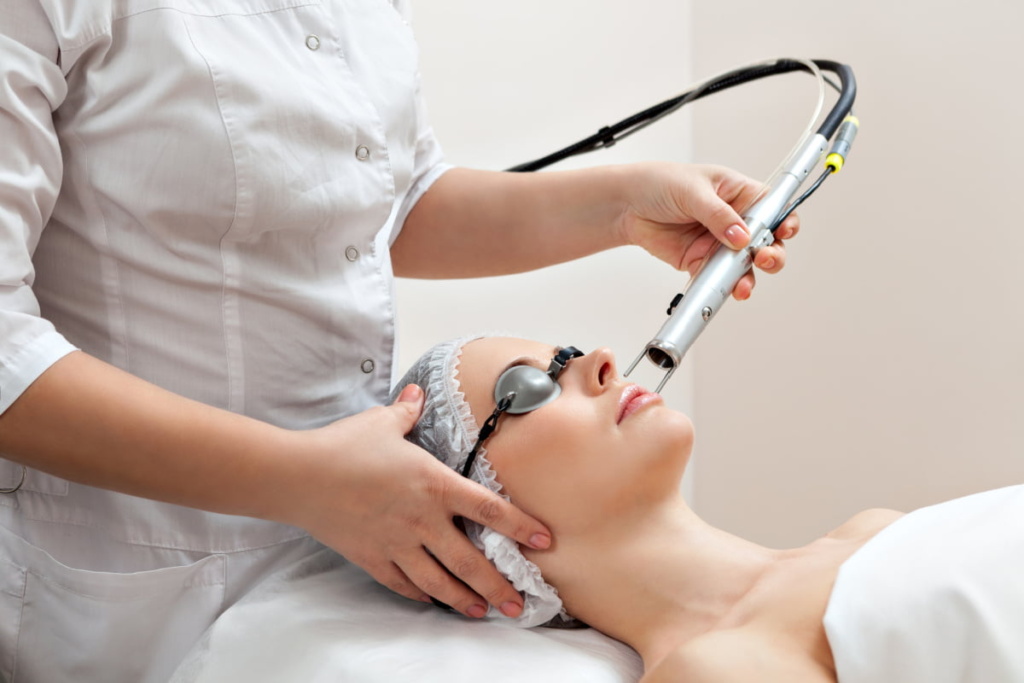
One of the key advantages of laser therapy for skin is its non-invasive nature, making it an appealing alternative to surgical procedures like facelifts or deep chemical peels. Laser treatments work by using focused light energy to target specific skin concerns without the need for incisions, stitches, or prolonged recovery periods. This significantly reduces the risks associated with more invasive methods, such as scarring or infection. Additionally, laser therapy often requires only minimal downtime, allowing patients to return to their daily routines quickly. With advancements in technology, these treatments are now highly precise, making them suitable for addressing a wide range of skin concerns with greater comfort and convenience.
Laser Peel Treatment Explained
Laser peel treatment, also known as laser resurfacing, is a popular form of laser therapy designed to improve skin texture and tone. By utilizing focused laser light, the procedure removes the damaged outer layers of the skin while stimulating collagen production in the deeper layers. This dual-action approach not only promotes the skin’s natural healing processes but also enhances elasticity and firmness over time. Laser peel treatments are commonly used to address wrinkles, fine lines, acne scars, and sun damage. Depending on the intensity and depth of the treatment, patients can see noticeable improvements in their skin’s appearance after just a few sessions, with minimal downtime in many cases.
Laser Surgery for Skin: When Is It Necessary?
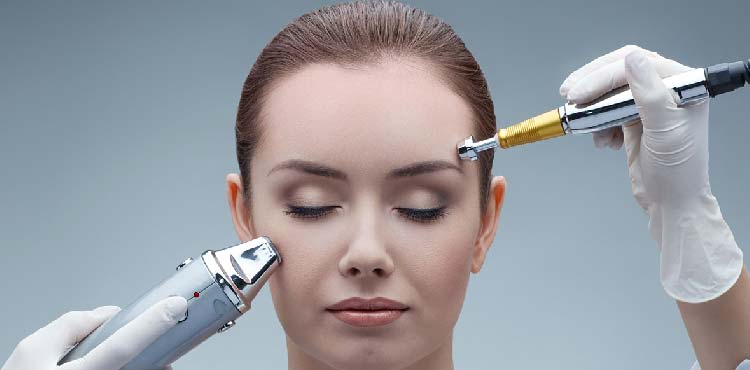
Laser surgery for skin is generally reserved for more severe cases, such as deep scars, advanced wrinkles, or significant sun damage. It’s an option for individuals who want more dramatic results or have skin issues that other treatments may not fully address.
Is Laser Surgery for Skin Safe?
While laser surgery for skin is considered safe when performed by trained professionals, it is essential to consult with a qualified dermatologist to determine if it is the right option for your skin type and needs. Like any medical procedure, there are risks, including the possibility of burns, scarring, or infections, though these complications are rare when performed by experienced practitioners.
What to Expect During a Laser Treatment for Face
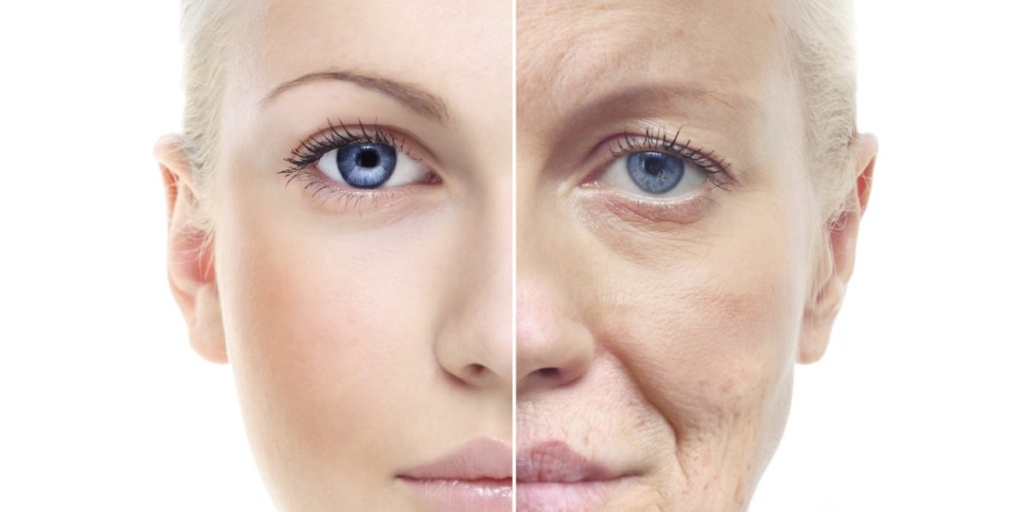
Before undergoing a laser treatment for face, your practitioner will assess your skin and discuss your goals. The process typically begins with cleansing the skin and applying a numbing cream to reduce discomfort. Once the skin is prepped, the laser will be directed at the targeted areas, and the treatment usually lasts between 30 minutes to an hour, depending on the size of the treatment area.
Post-Treatment Care
After the laser resurfacing treatment, some redness and swelling are common. However, these side effects typically subside within a few days. Your dermatologist will provide you with aftercare instructions, which may include moisturizing the skin, applying sunscreen, and avoiding sun exposure to ensure optimal healing.
Laser Operation for Skin: Is It Right for You?
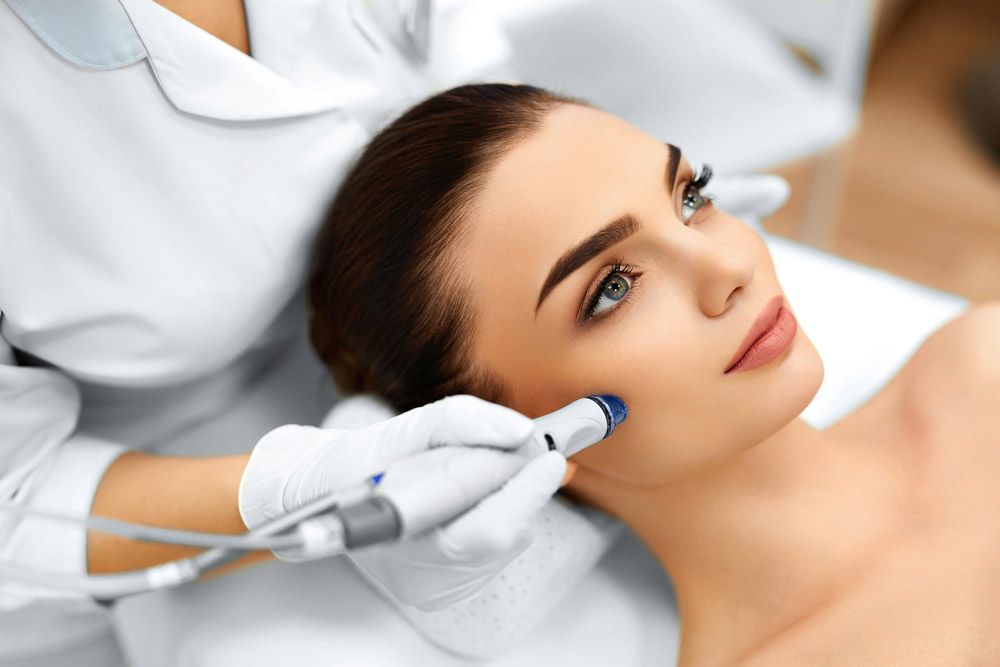
Deciding to undergo a laser procedure for skin requires careful consideration, as individual results can vary based on several factors. Skin type plays a significant role, as certain lasers are better suited for lighter or darker skin tones to avoid complications like hyperpigmentation. Age and overall skin condition also affect the outcome, as younger skin may respond differently compared to mature skin. Additionally, the specific concern being addressed—whether it’s acne scars, wrinkles, or pigmentation—determines the type of laser and treatment plan recommended. A thorough consultation with a qualified dermatologist or laser specialist is essential to evaluate your medical history, discuss potential risks, and set realistic expectations for the results.
Laser Therapy for Skin Rejuvenation: How Long Do the Results Last?
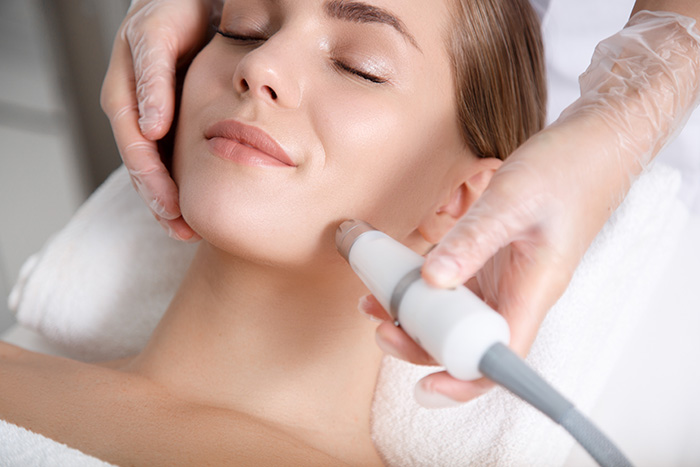
Close up of beautician hand making ultrasound facial procedure by special equipment. Her closed eyes with slight smile
One of the most common concerns about laser therapy for skin is the longevity of its results. While laser treatments can provide noticeable and long-lasting improvements, they are not a permanent solution. The duration of the results depends on factors such as the type of laser used, the skin condition being treated, and your skincare routine post-treatment. In many cases, follow-up sessions or maintenance treatments are recommended to preserve the effects over time. However, with proper care, including sun protection and a consistent skincare regimen, many patients enjoy rejuvenated, smoother, and more youthful-looking skin for several years following their initial treatment.
Laser Therapy for Wrinkles: A Powerful Anti-Aging Solution

Laser therapy for wrinkles is one of the most popular applications of laser skin treatments. The procedure works by stimulating collagen and elastin production in the skin, which helps to reduce the appearance of fine lines and wrinkles. Depending on the type of laser used, this can also improve skin tone and texture, leading to a refreshed and youthful appearance.
Fractional CO2 Laser for Wrinkles
Fractional CO2 laser is a commonly used treatment for wrinkles. It works by targeting microscopic areas of skin with intense light, stimulating collagen production and resulting in smoother, firmer skin. This procedure is highly effective for treating deep wrinkles and fine lines, especially around the eyes, mouth, and forehead.
Choosing the Right Laser Resurfacing Treatment
With various laser treatments available, choosing the right one can be daunting. Your decision will depend on several factors, including your skin type, the condition of your skin, and the type of results you’re hoping to achieve. For those in search of expert guidance, consulting with a skilled dermatologist or licensed practitioner specializing in Laser Treatment For Skin Jodhpur is essential to ensuring that you choose the most appropriate laser resurfacing treatment for your needs. The right professional can assess your individual concerns and recommend the best treatment to help you achieve your desired results.
Laser Skin Resurfacing: A Step Toward Youthful, Glowing Skin
Laser skin resurfacing is a powerful procedure that can address multiple skin concerns simultaneously. Whether you’re looking to smooth out fine lines, fade pigmentation, or improve the overall texture of your skin, laser skin resurfacing offers a versatile solution. For those searching for Laser Treatment For Skin Jodhpur, this cutting-edge procedure provides impressive results with minimal downtime, making it a go-to choice for many individuals seeking effective skin rejuvenation.
FAQ
What is laser treatment for skin rejuvenation?
Laser treatment for skin rejuvenation uses focused light to address various skin concerns like wrinkles, fine lines, scars, and pigmentation. It promotes collagen production and helps remove damaged layers of skin, revealing smoother, younger-looking skin underneath.
Is laser skin resurfacing safe?
Yes, laser skin resurfacing is generally considered safe when performed by a trained professional. However, like any medical procedure, there are some risks, such as burns or scarring, which are rare when the treatment is performed correctly.
How long does laser therapy for the face last?
The results of laser therapy for the face can be long-lasting, but not permanent. Most people experience smoother, rejuvenated skin for several months to years, depending on the type of treatment and aftercare. Follow-up treatments may be necessary to maintain results.
What is the difference between ablative and non-ablative laser treatments?
Ablative lasers remove the outer layers of skin to promote healing and reveal new skin, while non-ablative lasers stimulate deeper layers of the skin without damaging the surface. Ablative treatments tend to have more noticeable results but may involve longer recovery times.
Can laser therapy for wrinkles really reduce fine lines?
Yes, laser therapy for wrinkles is effective at reducing the appearance of fine lines and deep wrinkles. By stimulating collagen production and improving skin texture, laser treatments can significantly diminish the visibility of wrinkles, particularly around the eyes, mouth, and forehead.
How much downtime is required after a laser resurfacing treatment?
Downtime after a laser resurfacing treatment varies depending on the type of procedure. Non-ablative lasers generally require little to no downtime, while ablative treatments may involve a few days of redness, swelling, and peeling. Your dermatologist will provide specific aftercare instructions to ensure a smooth recovery.

